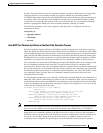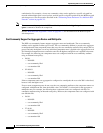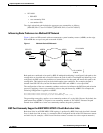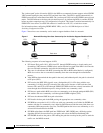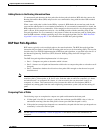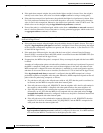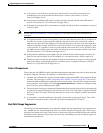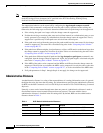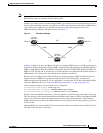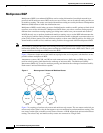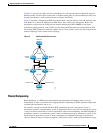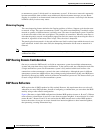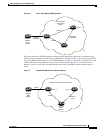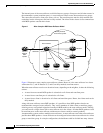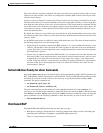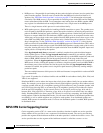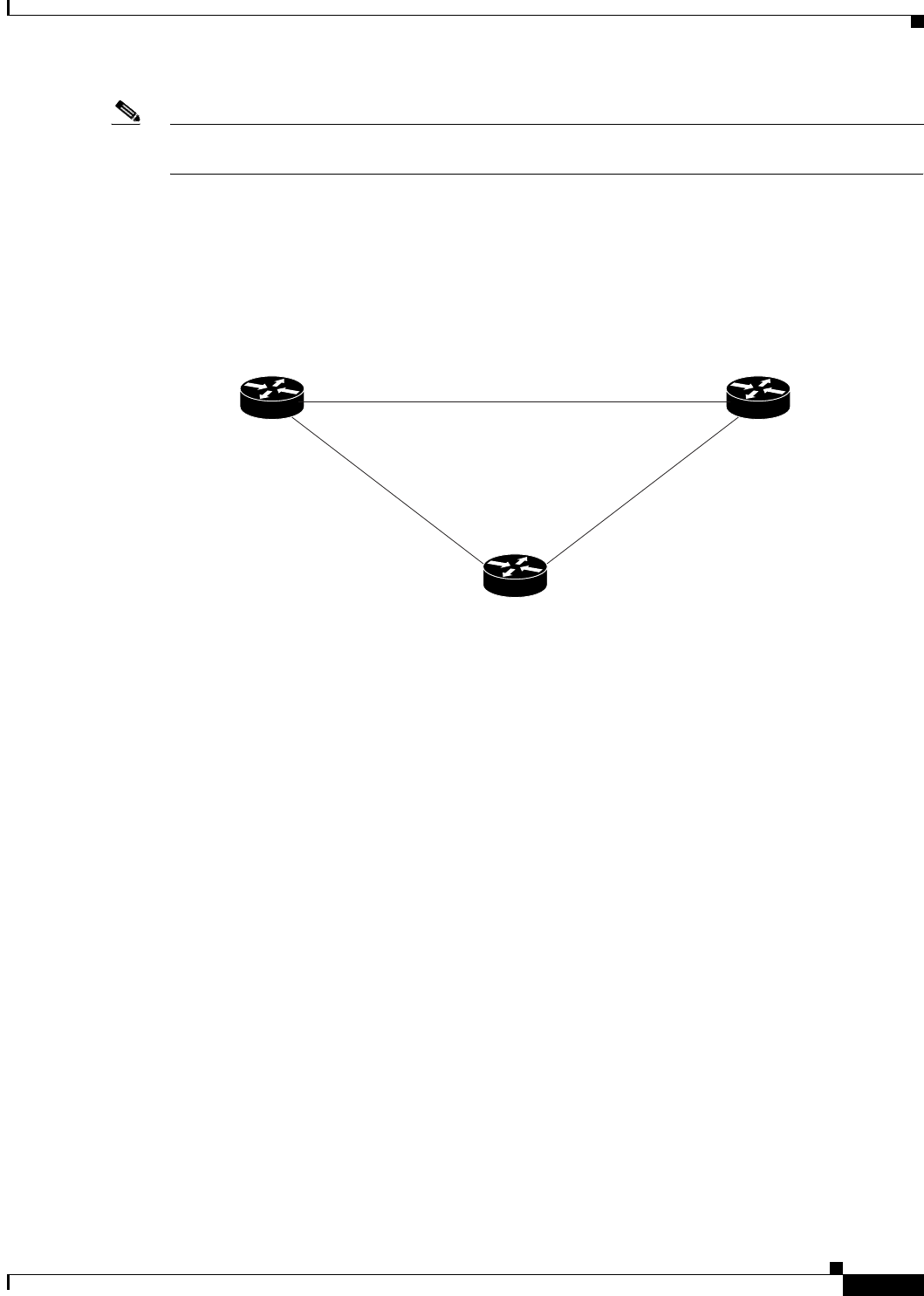
Implementing BGP on Cisco IOS XR Software
Information About Implementing BGP on Cisco IOS XR Software
RC-31
Cisco IOS XR Routing Configuration Guide
OL-14356-01
Note Distance does not influence the BGP path selection algorithm, but it does influence whether
BGP-learned routes are installed in the IP routing table.
In most cases, when a route is learned through eBGP, it is installed in the IP routing table because of its
distance (20). Sometimes, however, two ASs have an IGP-learned back-door route and an eBGP-learned
route. Their policy might be to use the IGP-learned path as the preferred path and to use the
eBGP-learned path when the IGP path is down. See Figure 3.
Figure 3 Back Door Example
In Figure 3, Routers A and C and Routers B and C are running eBGP. Routers A and B are running an
IGP (such as Routing Information Protocol [RIP], Interior Gateway Routing Protocol [IGRP], Enhanced
IGRP, or Open Shortest Path First [OSPF]). The default distances for RIP, IGRP, Enhanced IGRP, and
OSPF are 120, 100, 90, and 110, respectively. All these distances are higher than the default distance of
eBGP, which is 20. Usually, the route with the lowest distance is preferred.
Router A receives updates about 160.10.0.0 from two routing protocols: eBGP and IGP. Because the
default distance for eBGP is lower than the default distance of the IGP, Router A chooses the
eBGP-learned route from Router C. If you want Router A to learn about 160.10.0.0 from Router B (IGP),
establish a BGP back door. See “Indicating BGP Back-door Routes” section on page RC-58.
In the following example, a network back-door is configured:
RP/0/RP0/CPU0:router(config)# router bgp 100
RP/0/RP0/CPU0:router(config-bgp)# address-family ipv4 unicast
RP/0/RP0/CPU0:router(config-bgp-af)# network 160.10.0.0/16 backdoor
Router A treats the eBGP-learned route as local and installs it in the IP routing table with a distance of
200. The network is also learned through Enhanced IGRP (with a distance of 90), so the Enhanced IGRP
route is successfully installed in the IP routing table and is used to forward traffic. If the Enhanced
IGRP-learned route goes down, the eBGP-learned route is installed in the IP routing table and is used to
forward traffic.
Although BGP treats network 160.10.0.0 as a local entry, it does not advertise network 160.10.0.0 as it
normally would advertise a local entry.
AS 100
150.10.0.0
2.2.2.2 3.3.3.3
3.3.3.12.2.2.1
AS 200
160.10.0.0
AS 300
170.10.0.0
IGP
eBGP eBGP
Router A Router B
Router C
149547



